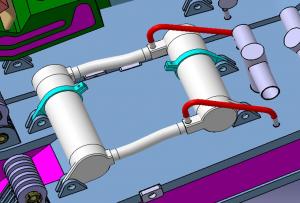Seeing the neutrons from the divertor perspective
The first Procurement Arrangement of 2013 was signed last week at ITER by the head of the Russian Domestic Agency, Anatoly Krasilnikov, and ITER Director-General Osamu Motojima for the divertor neutron flux monitoring system. "This represents a large volume of work that has been carried out by the diagnostics teams in Russia and at the ITER Organization and it is my pleasure to be here and make this signature," said Anatoly.
The divertor neutron flux monitoring system, or DNFM for short, is destined to sit at the bottom of the machine in three roughly equally spaced positions around the torus, integrated with the divertor.
This monitoring system uses sensors that provide signals, or counts, when hit by the neutrons produced during fusion reactions. "By knowing this neutron emission," says Luciano Bertalot, "fusion power can be estimated, providing very important information regarding ITER performance."
The DNFM will need to be integrated into the divertor modules before they arrive on the ITER site. Since the development of the divertor is well underway, the signing of this Procurement Arrangement is an important milestone in order to maintain the ITER schedule.
The divertor neutron flux monitoring system sitting at the bottom of the torus. It is integrated in the divertor and is designed to provide routine measurements of the neutron emissions.



